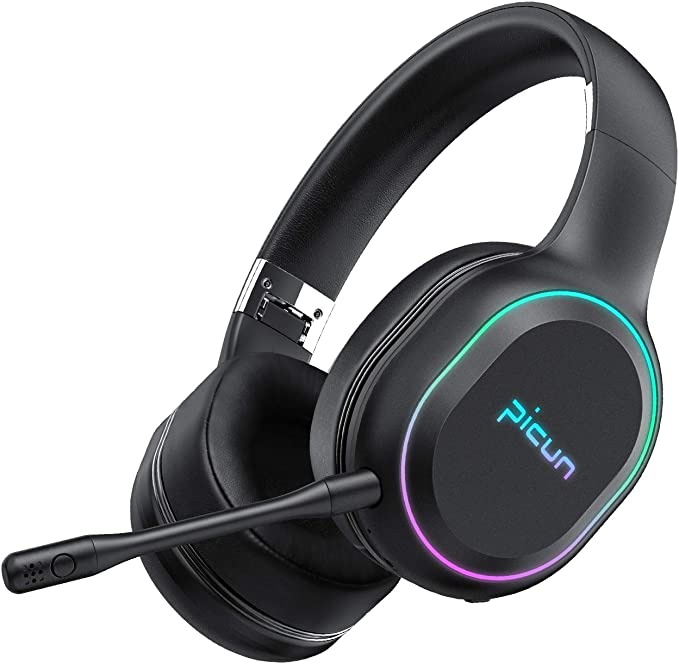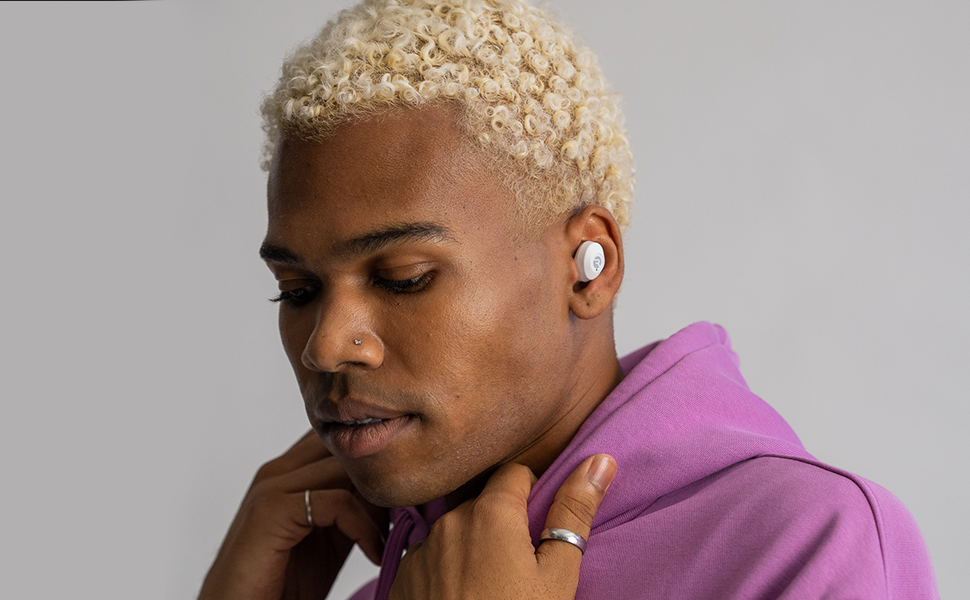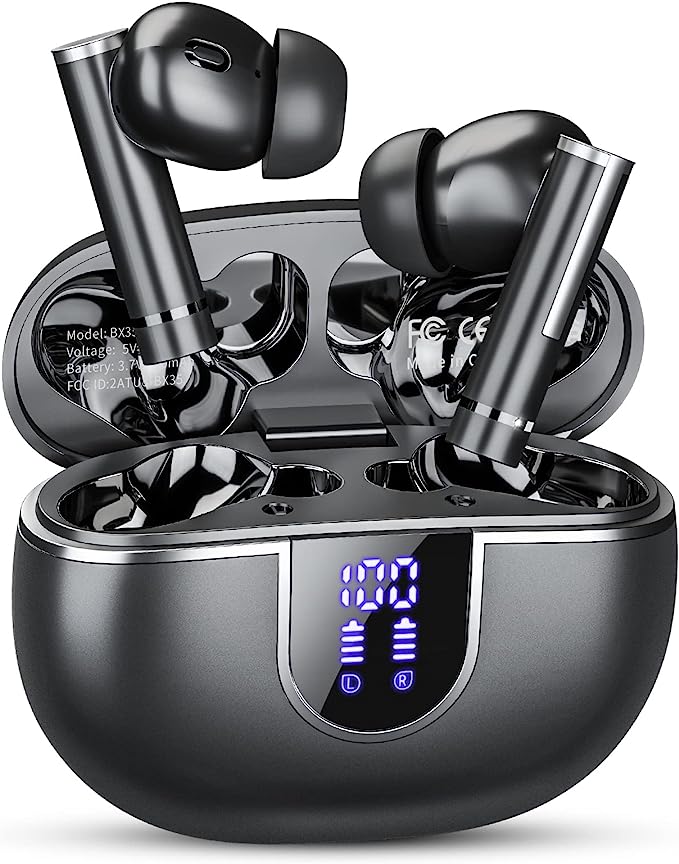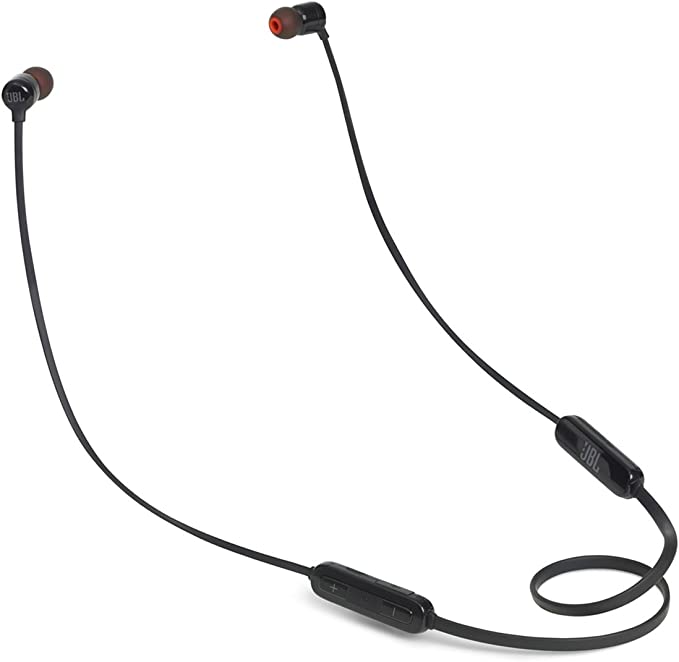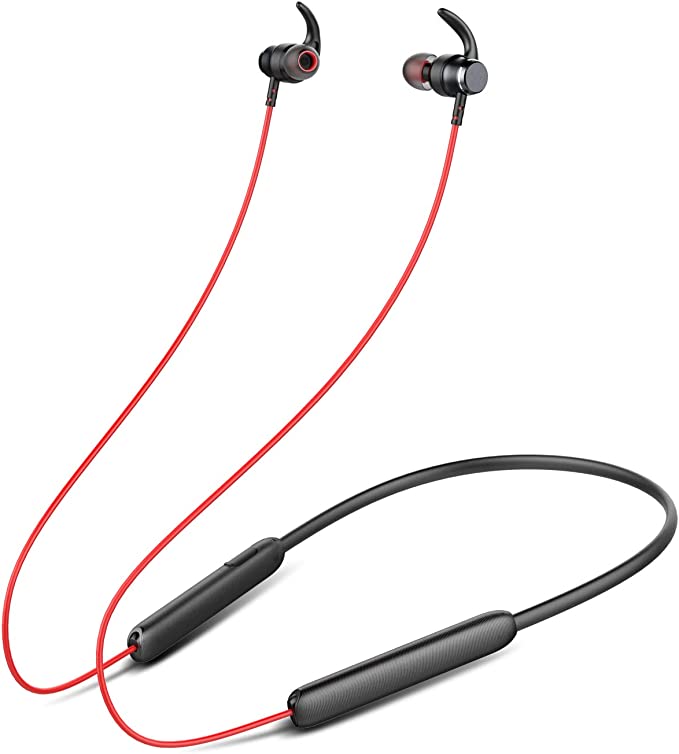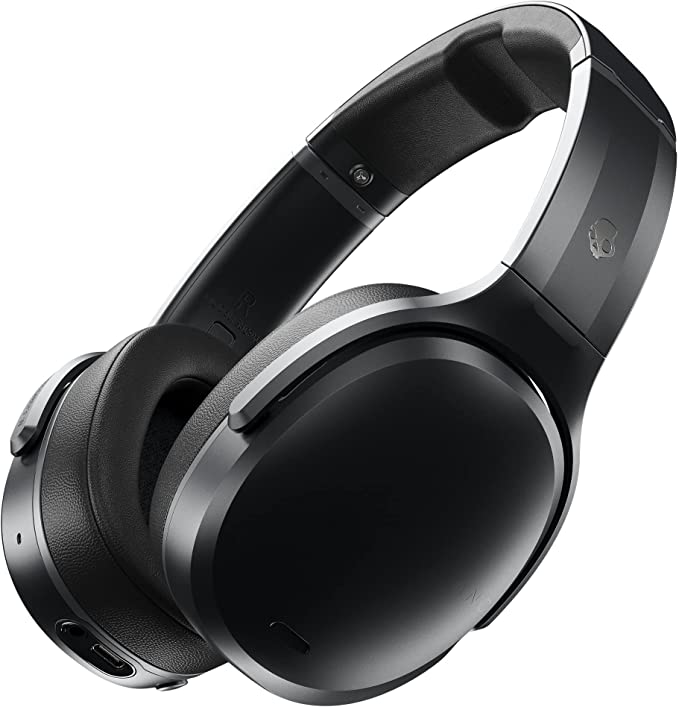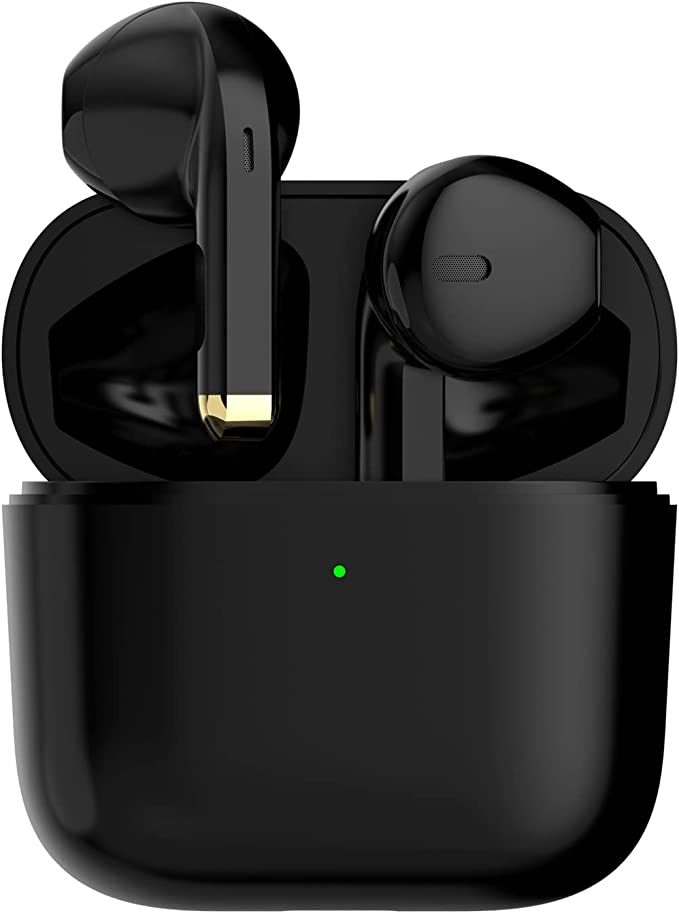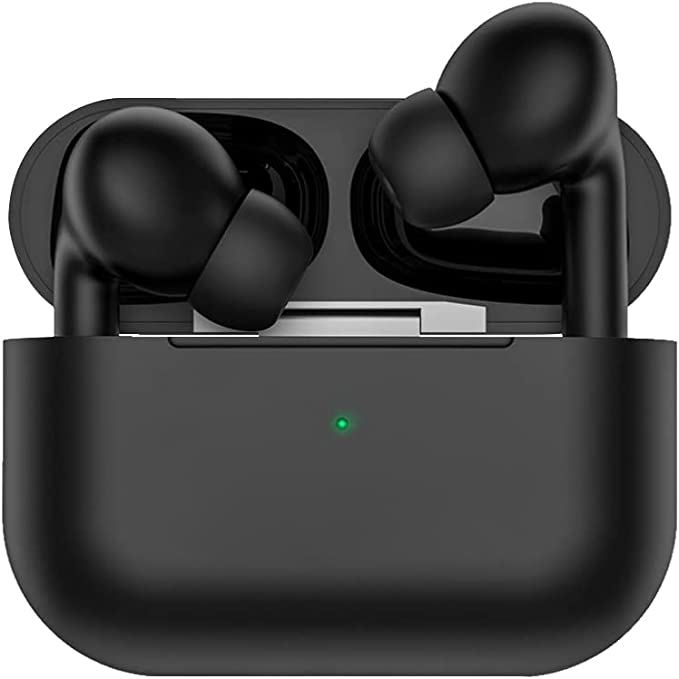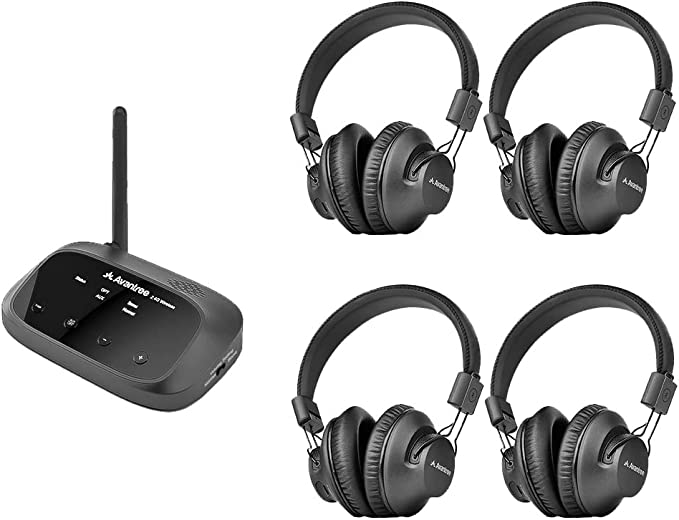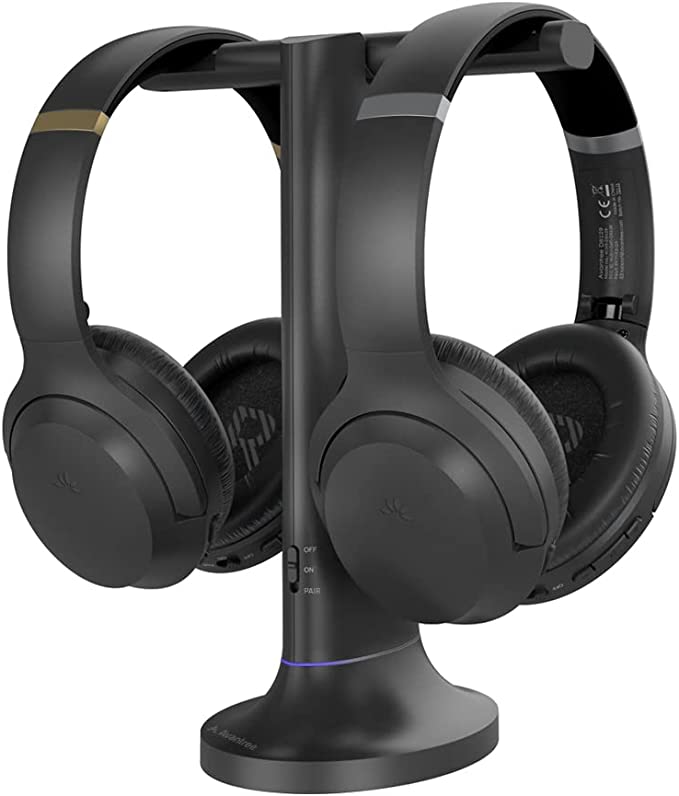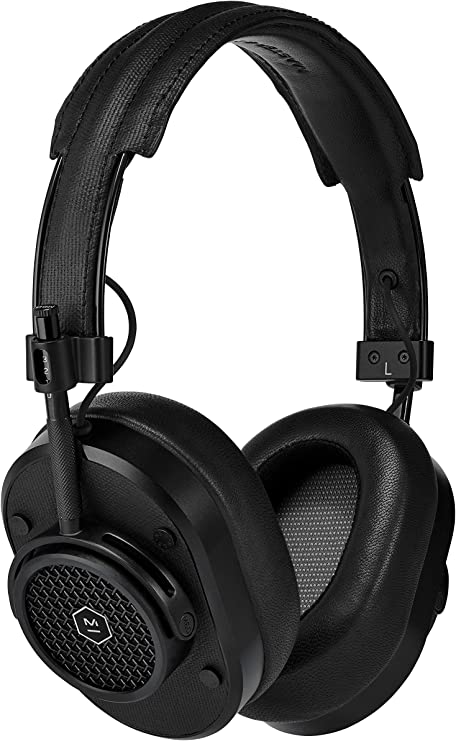Morpheus 360 HP5500G Wireless Headphones: The Science of Sound, Comfort, and Wireless Freedom
Update on May 14, 2025, 11:41 a.m.
Beyond the Music – The Invisible Tech That Shapes Your Sound
There’s a quiet sort of magic that unfolds each time we slip on a pair of headphones. The world outside fades, replaced by the intricate soundscape of a favorite symphony, the hushed narration of an audiobook, or the energetic pulse of a workout playlist. It’s an intimate experience, a personal concert hall chauffage just for us. We live with this magic daily, yet how often do we pause to consider the intricate tapestry of science and engineering that makes it possible? Products like the Morpheus 360 HP5500G Wireless Headphones, sit at a fascinating intersection of accessibility and technology, offering a perfect opportunity to peel back the curtain. They aren’t just conduits for sound; they are compact marvels of physics, material science, and wireless communication. Join me on a journey, not merely to review a product, but to explore the remarkable, often invisible, technology that shapes your personal audio world, using the HP5500G as our guide. We’ll uncover the alchemy that transforms silent electricity into soul-stirring sound.

Chapter 1: The Unseen Symphony – Mastering Wireless Freedom with Bluetooth
The Allure of Untethered Sound
The dream is simple, yet profound: to move freely, unburdened by the tethers of cables, while remaining enveloped in our chosen soundscape. Whether you’re navigating a bustling kitchen, pacing during an important call, or simply stretching out on the sofa, the appeal of wireless audio is undeniable. It’s this very allure that headphones like the Morpheus 360 HP5500G tap into, promising a seamless connection to your digital world. But what exactly is happening in that invisible space between your device and your ears?
Decoding Bluetooth
At its heart, Bluetooth is a sophisticated form of radio communication, a silent conversation happening just beyond our senses. Imagine it as a meticulously choreographed dance of radio waves, operating primarily within the 2.4 Gigahertz (GHz) Industrial, Scientific, and Medical (ISM) radio band. This is a busy neighborhood, shared with Wi-Fi routers, microwave ovens, and a host of other devices. So, how does your HP5500G, which boasts a typical connection range of up to 33 feet (around 10 meters), manage to hold a clear conversation with your phone or laptop without getting lost in the din?
The secret lies in a clever technique called Frequency-Hopping Spread Spectrum (FHSS). Instead of sticking to one radio channel, Bluetooth devices rapidly hop between dozens of predefined channels many times per second. Think of it like two people at a crowded party, constantly switching to quieter corners to continue their private chat, making their signal robust against interference and difficult to intercept.
When it comes to streaming your favorite tunes, a specific Bluetooth “profile” called the Advanced Audio Distribution Profile (A2DP) comes into play. This profile dictates how stereo audio is compressed, transmitted, and then reconstructed by the headphones. The audio data is broken into tiny packets, sent wirelessly, and then reassembled and buffered slightly in the headphones to ensure a smooth, uninterrupted flow.
Now, the quality of this wireless audio can be influenced by audio codecs – algorithms that compress and decompress the audio data. The most basic codec, mandatory for all A2DP devices, is SBC (Subband Codec). While functional, it’s a “lossy” codec, meaning some audio data is discarded to save bandwidth, which can sometimes affect fidelity. Some user discussions around headphones like the HP5500G mention the use of PCM (Pulse Code Modulation) streams over Bluetooth or the absence of more advanced codecs like Qualcomm’s aptX in certain models. PCM itself isn’t a compression codec but rather a digital representation of analog audio; transmitting uncompressed PCM over standard Bluetooth A2DP (which would typically use SBC or similar for compression) would be very bandwidth-intensive and unusual for typical consumer headphones. More commonly, PCM data on the source device is encoded using SBC (or AAC, aptX if supported) before Bluetooth transmission. The absence of codecs like aptX, which are designed for lower latency and potentially higher fidelity, means the headphones would primarily rely on the universal SBC, or perhaps AAC if the source device supports it well. This choice is often a balance of licensing costs, power consumption, and target audio performance for the device category.
The Wired Lifeline
Despite the wonders of wireless, there’s a timeless elegance and reliability to a good old-fashioned cable. The Morpheus 360 HP5500G thoughtfully includes a detachable 3.5mm audio jack. This isn’t just a nod to tradition; it’s an eminently practical feature. When your battery inevitably runs low, or if you want to connect to a device without Bluetooth (like an in-flight entertainment system or an older MP3 player), this wired connection becomes your lifeline. It allows the headphones to operate in a passive mode, drawing audio directly from the source without needing battery power for the Bluetooth radio or internal amplifiers. It’s a simple solution, ensuring your music never has to stop, a steadfast friend in an increasingly wireless world.

Chapter 2: The Heart of a Headphone – Crafting Fidelity with Drivers and Tuning
What is “Hi-Fi Stereo” Really?
The term “Hi-Fi Stereo” is frequently emblazoned on audio equipment, including the Morpheus 360 HP5500G. But what does this evocative phrase truly signify for your listening experience? “Hi-Fi,” short for High Fidelity, is an aspiration: to reproduce sound that is as faithful as possible to the original recording, with minimal distortion, added noise, or alteration. It’s about conveying the artist’s intent, the nuances of an instrument, the atmosphere of a performance. “Stereo,” of course, refers to the delivery of two distinct audio channels, one for your left ear and one for your right. This separation is fundamental to creating a sense of space, depth, and directionality in sound – what audiophiles often call the “soundstage.” It’s the difference between sound simply being there and sound enveloping you.
Meet the Maestros: The 40mm Drivers
At the very core of any headphone, the components responsible for transforming electrical signals into the sound waves that grace your ears are the drivers. Think of them as miniature, high-precision loudspeakers, or the “vocal cords” of the headphone. The Morpheus 360 HP5500G, for instance, employs 40mm drivers. This “40mm” refers to the diameter of the driver’s diaphragm.
Let’s peek inside this marvel of electromechanical engineering:
- The Diaphragm: This is a thin, lightweight membrane. Its vibrations are what actually create sound waves by moving the air. The material and shape of the diaphragm are critical. Larger diaphragms, like the 40mm ones in the HP5500G, generally have the potential to move more air, which can be beneficial for producing lower bass frequencies with authority.
- The Voice Coil: Attached to the diaphragm is a coil of very fine wire – the voice coil. The electrical audio signal from your music player flows through this coil.
- The Magnet: A permanent magnet (often neodymium for its strength-to-weight ratio) creates a fixed magnetic field around the voice coil.
When the audio signal (which is an alternating current) passes through the voice coil, it generates a fluctuating magnetic field. This new field interacts with the fixed field of the permanent magnet, causing the voice coil – and thus the diaphragm attached to it – to rapidly move back and forth. These vibrations push and pull the air, creating the pressure waves we perceive as sound. It’s a beautiful, intricate dance of physics happening thousands of times per second.
The Enclosure’s Role
The earcup, the housing that surrounds the driver, isn’t just a passive container or a style statement. It’s an integral part of the acoustic system. The volume of air behind the driver, the materials used, and whether the earcup is sealed (closed-back, like most over-ear consumer headphones for isolation) or open (open-back, often favored by audiophiles for a more spacious sound but leaks sound in and out) significantly influence the final sound character, especially the bass response and overall tonal balance.
“Custom-Tuned” – The Art Within the Science
You’ll often see headphones, including the HP5500G, described as having “custom-tuned” drivers. This “tuning” is where audio engineering blends with an artistic sensibility. It involves a multitude of adjustments made by engineers to achieve a specific desired sound signature. This can include:
- Modifying the physical properties of the diaphragm (e.g., its rigidity, damping).
- Adjusting the acoustic properties of the earcup enclosure (e.g., internal damping materials, porting if any).
- Fine-tuning the electromechanical parameters of the driver assembly.
- In some more advanced headphones, implementing Digital Signal Processing (DSP) to electronically shape the sound (though this is more common in headphones with active noise cancellation or specific sound modes).
The goal of this tuning, for the HP5500G, is stated as achieving “deep bass, and clear mid-end and high-end tones.” This suggests an aim for a balanced, yet engaging sound profile that caters to a wide variety of music genres and media.
Frequency Response – The Sound Spectrum
The range of frequencies a headphone can reproduce is known as its frequency response. Human hearing, at its peak, typically spans from about 20 Hertz (Hz) – the deep rumble of a subwoofer or a pipe organ’s lowest note – to about 20,000 Hz, or 20 Kilohertz (kHz) – the delicate shimmer of a cymbal or the highest harmonics of a violin. The Morpheus 360 HP5500G product information specifies an upper frequency response reaching 22 kHz. While frequencies above 20 kHz are generally inaudible to most adults, some theories suggest that their presence (or accurate reproduction) might subtly influence the perception of audible frequencies or contribute to a sense of “airiness.” However, what’s more critical than just the extreme numbers is how evenly and accurately the headphones reproduce all the frequencies within the audible range. A “flat” frequency response aims to reproduce all frequencies at an equal level, prized for monitoring, while many consumer headphones opt for a slightly “V-shaped” or “U-shaped” response, with boosted bass and treble, which can sound more exciting for casual listening. The “tuning” process is what shapes this curve.

Chapter 3: The Embrace of Sound – The Science of All-Day Comfort and Isolation
Your Personal Sound Sanctuary: The Over-Ear Design
Beyond the intricacies of sound reproduction, the physical interaction between headphones and your head is paramount to the listening experience. The Morpheus 360 HP5500G features an “Over-Ear” or “circumaural” design. This means the earcups are large enough to completely encircle your ears, resting on the head around the pinna (the external part of the ear), rather than directly on it (on-ear or supra-aural) or inserted into the ear canal (in-ear). This design choice has significant implications for both comfort and sound.
One of the primary acoustic benefits of a well-executed over-ear design is passive sound isolation. By creating a relatively effective seal around your ears, the earcups physically block a good portion of ambient noise from the outside world. The HP5500G’s description highlights this, aiming for “a comfortable seal to reduce ambient room noise.” Imagine this as creating a mini, personal listening room, free from many of the distractions of your surroundings. This allows you to become more immersed in your audio, and often means you can listen at lower, safer volume levels because you’re not constantly battling external sounds.
The Ergonomic Equation
However, achieving that perfect seal and long-lasting comfort is a delicate ergonomic balancing act. Engineers must consider factors like clamping force (how tightly the headphones press against your head), weight distribution, and the adjustability of the headband to accommodate a wide variety of head shapes and sizes. Too little clamping force, and the seal is compromised, leading to sound leakage (both in and out) and a loss of bass response. Too much, and you’re inviting discomfort and listener fatigue.
Material Magic for Your Ears
The materials chosen for the earcups play a starring role in this comfort equation. The Morpheus 360 HP5500G utilizes Memory Foam Ear Cushions covered in Protein Leather.
- Memory Foam’s Gentle Hug: This fascinating material, technically a type of viscoelastic polyurethane foam, possesses a unique quality: it softens in reaction to body heat. As you wear the headphones, the memory foam gently conforms to the specific contours around your ears and side of your head. This creates a more customized fit, distributing the clamping pressure more evenly and minimizing specific pressure points that can lead to soreness during extended listening sessions. It’s like a slow, personalized handshake for your ears.
- Protein Leather – Softness Meets Durability: Protein leather is a synthetic material, an artificial leather engineered to offer many of the desirable qualities of genuine leather – such as a soft, supple feel against the skin and good breathability – often with added benefits like increased durability, resistance to cracking, and easier cleaning. It’s a common choice in headphones aiming for a balance of comfort, longevity, and cost-effectiveness.
A Note on Earcup Depth and Shape
An important, though often overlooked, aspect of over-ear headphone comfort is the internal depth and shape of the earcups. Our ears are all unique in size and protrusion. If the internal cavity of an earcup is too shallow, the user’s ear might press against the hard surface covering the driver, leading to discomfort over time. This is a general design consideration that engineers grapple with, and it’s something highlighted in some user feedback for various headphone models across the market where “shallow earcups” are mentioned. Finding a universally perfect depth and shape is a challenge, but ample padding and well-considered internal geometry are key.
Ready for the Road: Adjustability and the Foldable Form
To cater to diverse users, adjustability is crucial. The extendable arms of the HP5500G’s headband allow for vertical adjustment to position the earcups correctly over the ears. Furthermore, the “foldable design” is a nod to practicality. This often involves hinges on the headband or yokes connecting the earcups, allowing the headphones to collapse into a more compact form for easier storage and portability – a welcome feature for commuters, travelers, or anyone who needs to tuck their headphones away neatly. The mechanics of these hinges must be robust enough to withstand repeated use while maintaining the structural integrity of the headphones.

Chapter 4: Effortless Command & Enduring Power – Interface and Battery Life
Conversations and Control at Your Fingertips
In our seamlessly connected world, headphones are often more than just personal sound systems; they are an interface to our digital lives. The Morpheus 360 HP5500G incorporates features designed for this interactive role.
- One-Touch Simplicity: The presence of “One-Touch Media Controls” on the left-hand earcup is a significant convenience. These typically include buttons for play/pause, track forward/back, volume up/down, and power on/off. This is a direct application of Human-Computer Interaction (HCI) principles, aiming to make common operations intuitive and accessible without needing to constantly reach for the source device (phone, tablet, or computer). Behind each satisfying click of these buttons are tiny micro-switches that complete an electrical circuit, sending a command – often via Bluetooth profiles like AVRCP (Audio/Video Remote Control Profile) – to the connected device.
- The Invisible Voice Catcher: The “Built-In Microphone” transforms the HP5500G from a listening device into a communication tool, essential for taking calls or interacting with voice assistants. In most modern headphones, these are typically small MEMS (Micro-Electro-Mechanical Systems) microphones or electret condenser microphones. These microphones are designed to capture your voice clearly while ideally minimizing the pickup of ambient sounds, though the effectiveness of background noise suppression varies greatly depending on the microphone design and any accompanying noise-cancellation software.
- Clarity in Communication: When interacting with a device, especially through voice prompts or call functions, clarity is key. Some users of various electronic devices occasionally report that pre-programmed voice prompts can be difficult to understand, perhaps due to accent, speed, or a less-than-ideal translation in localized versions. While the HP5500G’s specific voice prompt system isn’t detailed, it highlights a general design challenge: ensuring that all auditory feedback from a device is clear, concise, and easily comprehensible to a global user base. Effective UI sound design and careful localization are crucial for a positive user experience.
The Lifeblood of Wireless: Battery and Charging Insights
The untethered convenience of wireless headphones is entirely dependent on their internal power source.
- Powering 8-10 Hours of Playtime: The HP5500G is rated for 8-10 hours of playtime. This endurance is typically provided by a rechargeable Lithium-ion (Li-ion) or Lithium-polymer (Li-poly) battery. These battery chemistries are favored in portable electronics due to their high energy density (meaning they can store a lot of energy in a small, lightweight package), relatively slow self-discharge rate, and lack of “memory effect” (which plagued older rechargeable battery types). The actual playtime will always vary based on factors like listening volume (higher volumes consume more power to drive the diaphragms), the complexity of the audio signal, the distance from the Bluetooth source, and even ambient temperature.
- The Ritual of Recharging: When the power does run low, the HP5500G requires a 2-3 hour charge, accomplished via a supplied USB to Micro USB cable. Micro USB was a long-standing standard for charging many portable devices, though the industry has been increasingly shifting towards the more versatile USB-C connector. The charging process involves a charging circuit within the headphones that carefully manages the voltage and current flowing into the battery to ensure safe and efficient replenishment.
This careful management of power, combined with user-friendly controls, aims to make the technological complexity of the HP5500G fade into the background, allowing the user to simply enjoy their audio experience.

Conclusion: The Informed Listener – Appreciating the Art and Science in Your Ears
Our journey through the inner workings of a device like the Morpheus 360 HP5500G Wireless Headphones reveals a compelling narrative. It’s a story of radio waves dancing through the air to deliver our music, of tiny diaphragms vibrating with precision to recreate every note, of materials engineered for hours of comfort, and of power managed frugally to keep the soundtrack of our lives playing. What might seem like simple features – a wireless link, a comfortable fit, clear sound – are, in reality, the products of decades of scientific research, meticulous engineering, and thoughtful design.
The Morpheus 360 HP5500G stands as an accessible example of how these complex principles are brought together to serve a universal human desire: to connect with sound, with information, and with each other. By understanding a little more about the “how” and “why” behind the technology we use every day, we transform from passive consumers into informed listeners. We gain a new appreciation for the ingenuity packed into these compact companions and become better equipped to discern the features and qualities that truly matter to our individual listening experiences.
So, the next time you don your favorite pair of headphones, take a moment. Listen not just to the music, but also for the faint, marvelous hum of the science and artistry that makes it all possible. In understanding, we find a richer, more rewarding connection to the world of sound that surrounds us.




